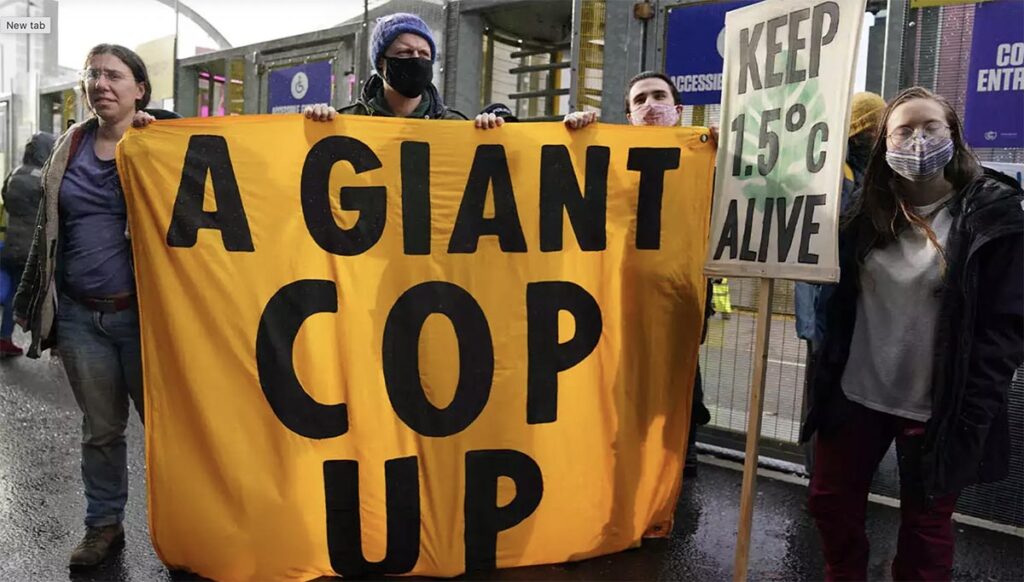This article originally appeared on TOI+.
Glasgow wasn’t a washout. But on coal, India gained little & let China get away

Climate change conferences follow a pattern: They never end on time; they make incremental progress, and there is always a last-minute drama that captures the headlines, drowning the overall assessment of the meeting. COP26 in Glasgow followed the pattern to a tee, though with a little more drama than some of the previous meetings.
Over the next few days, we will read headlines (mainly from Western media) screaming murder on how India weakened the outcome of COP26 by forcing a last-minute amendment that diluted the language on ending coal power. We will also read headlines from India defending this amendment. But in these headlines, consequential decisions made by this COP would be lost. First, though, let’s look at the coal controversy.
In the conference’s closing minutes, a dramatic process to change one paragraph of the final text unfolded, which was started by China, ended by India and decried by many countries. The paragraph relates to the phasing out of coal power. In the final version of the text, “phase-out” of coal power was mentioned.
China was the first to ‘mildly’ object to this paragraph. Then India proposed a new version of the paragraph that replaced “phase-out” with “phase-down” to describe what needs to happen to coal use in power generation. While India’s proposal was accepted, several countries, mainly Europeans and small vulnerable countries, objected to this change, including how it was done. Though the change in the word itself is a non-issue, how India got this done is certainly something that needs introspection.
Phase-down means progressively reducing the use of coal, whereas phase-out means altogether eliminating its use over a period of time. Thus, a country will have to first phase down its coal use and ultimately phase it out. So, phase-out is the end of phase-down. By changing the word to phase-down, India accepted that coal power must be reduced but did not agree to completely end it.
Now, this differentiation would be significant if there was a deadline to do so. But nowhere in the text is a timeline mentioned. In fact, Germany, the poster child of coal phase-out, is planning to end coal power by 2038 – two decades in the future. So, this fight over phase-out and phase-down is immaterial without a deadline, at least for this decade. And, the way renewable plus storage technology is developing, it is inevitable that India will not instal new coal power post-2030.
So, the question is what India gained by forcing this change? In my view, the answer is nothing. This change has no material bearing on India’s energy future or its development trajectory. However, by projecting itself as a coal champion and forcing the modification at the last moment, India’s image has undoubtedly taken a hit.
What is even more galling is that China, which consumes 50% of the world’s coal and had initiated the demand to change the paragraph, sat pretty while we exposed ourselves to the scorn of Western media. And, this has been the problem of India’s negotiating strategy at climate meets. We pick up fights where there is none.
At COP26, we should have exposed the double standards of developed countries on oil and gas, and fought for the finance and technology needed to meet the ambitious target announced by Prime Minister Narendra Modi at the beginning of the conference. But we did little of these and wasted our energy on issues that are good for rabble-rousing. India has to decide what it wants. I am not sure that we have really thought through the end game.
Coming back to the decisions taken at COP, it is clear that many of them will shape how the world will develop in the future.
Overall, while the Glasgow climate conference has not delivered everything, it has provided enough to keep the hope alive for meeting the 1.5°C climate goal. As far as India is concerned, it has decided to decarbonise its economy and pursue green development by announcing a net-zero target for 2070 and an ambitious 2030 target. We must now develop a negotiating strategy to facilitate and get financial and technological support for these targets.